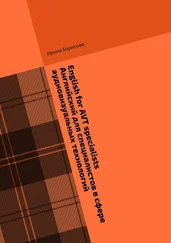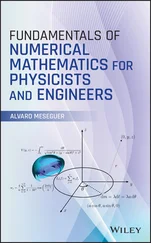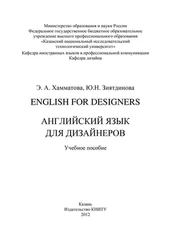SECTION 2 (3+1+3)
Synchronous up/down Counters
The first class period
Review of “Basic Electrical Measuring Instruments”. 10
Topical content: Synchronous up-down counters. 10
Grammar item: Infinitive.
Text Synchronous up/down Counters
1. Synchronous up/down counters count number of pulses applied on the clock input. They consist of flip-flops and steering logic. (Fig. 3).
| Clock pulses Inputs clear InputsLoad input |
A |
Ha |
data ( outputs-h Carry and > borrow |
| в |
ав |
| C |
°-c |
| D |
|
| >UP |
| yiJownCLRLoad |
Carry |
| Fig. 3. Synchronous up/down counters |
2. The reversible counters have the; following inputs and outputs: clock pulses inputs for counting down and counting up; clear input for resetting counter at any time; data and load inputs for presetting counter to desirable initial number before co-
Data
inputs
output for indicating overflow of counter and borrow output for indicating underflow of counter.
3. The outputs of all flip-flops are triggered by a low-to-high level transition of either count (clock) input. The direction of counting is determined by which count input is pulsed while the other count input is high.
4. Counters are fully programmable, that is each output may be preset to either level by entering the desired data at the data inputs while the load input is low.
5. The output will change to agree with data inputs independently of the count pulses. This feature allows the counters to be used as module-N dividers by simply modifying the count length with preset inputs.
6. A clear input forces all outputs to the low level when a low level is-applied to this input. The clear function is independent of the count and load inputs.
7. The counters are designed to be cascaded. Both borrow and carry outputs are available to cascade both the up and down counting functions. The borrow output produces a pulse when the counter underflows. Similarly thd carry output produces a pulse when overflow occurs.
8. The counters can be easily cascaded by feeding the borrow and carry outputs to the count-down and count-up inputs respectively of the succeeding counter.
1 5
Read the text and write 7 names of inputs and outputs of counters.
2 3
Looking through the text find and read the passages containing the information:
а) о назначении реверсивных счетчиков;
б) об их устройстве;
в) об изменении выходного сигнала триггеров;
г) о каскадировании счетчиков.
3 3
Read the text paying attention to the Infinitives.
4 5
Repeat the words after the teacher. Then read them by yourself paying attention to their Russian equivalents.
synchronous up/down counter pulse
clock input flip-flop steering logic
output
clock pulses input counting down counting up clear input to reset data input load input presetting carry output overflow borrow output underflow to trigger
low-to-high level transition
count (clock) input to enter data feature
module-N divider to modify the count length to cascade by feeding outputs
5
Study the text carefully. Use ex. 4.
— реверсивный счетчик
— импульс
— тактовый ход
— триггер
— управляющее логическое устройство
— выход
— вход тактовых импульсов
— вычитание
— сложение
— вход «очистка»
— сбросить, очистить
— вход данных
— вход загрузки
— предварительная установка
— выход «перенос»
— переполнение
— выход «заём»
— опустошение
— переключать
— перепад уровня с низкого на высокий (с 0 на 1)
— тактовый вход
—• закладывать данные
— характерная черта
— делитель частоты
— изменять длительность счета
— собирать в каскады
— путем подключения выходов
6
7
Read the words, point out those which deal with the topic “Inputs of Synchronous Counters” and write them out.
g) counter
h) available
i) to cascade
j) to preset-
k) overflow
l) underflow
m) to modify
n) to trigger
o) similarly
p) borrow
q) clock
r) count
s) to design
t) to consist
c) to use
a) input d) valve
b) data. e) output
f) pulse
u) steering
v) level
w) transition
x) reversible
y) clear
z) indication a 1 1 1 Read the words and point out those of the text:
2 2 a) capacitor; b) overflow; c) to couple; d) frequency; e) underflow; f) input; g) to consume; h) to trigger; i) to modify; j) case; k) output; 1) power; m) bridge; n) feature; o) transition; p) point. The second class period 6
) to determine I/) low
c') logic
cT) independently
Read the word-combinations and point out those with Participles:
a) a varying amount; b) increasing the thickness; c) with their stators connected in series; d) being a trained technician; e) by using a valve? f) an instrument for measuring current; g) copper being a good conductor; h) having been adjusted; i) avoid wearing loose overalls; j) know about Franklin having worked in.
9 1
Read the sentences and point out numbers of those which deal with the topic “Synchronous Counters”.
1. The control pulses are generated from the supply voltage, which is supplied to the control pulse circuits via a transformer and a filter circuit. 2. The synchronous up/down counters consist of flip-flops and steering gear. 3. Comparison of the filtered a-c voltages and the input 1signal to the control pulse circuits gives the phasing of the control
pulses. 4. The control pulses are then fed to a logic circuit which checks
that they are within set delay angle limits. 5. The output of all flip-flop^ are triggered by a low-to-high level transition of either count input.
6. A clear input forces all outputs to the low level when a low level is applied to this input.
10 20
Home exercise. Read some information on Infinitive with the purpose of its correct translation into Russian.
Особенности перевода инфинитива на русский язык Английский язык Русский язык
I. Инфинитив в функции: I
1) подлежащего 1) Существительное. Пример.
sion was round unnecessary.
2) обстоятельства цели
Е. g. Не had taken extraordinary steps to ensure the precision and accuracy of measurements, enough/too+adj.-finfinitive E. g. Any absorption in this region is too weak to be observed.
3) обстоятельства следствия
E. g. The units had rearranged to produce a new form.
4) определения
Е. g. То carry out this discus- Нашли, что проведение этой дискуссии нецелесообразно.
2) «Для того, чтобы, для». Пример. Он принял особые меры для обеспечения точности и аккуратности измерений.
Читать дальше











